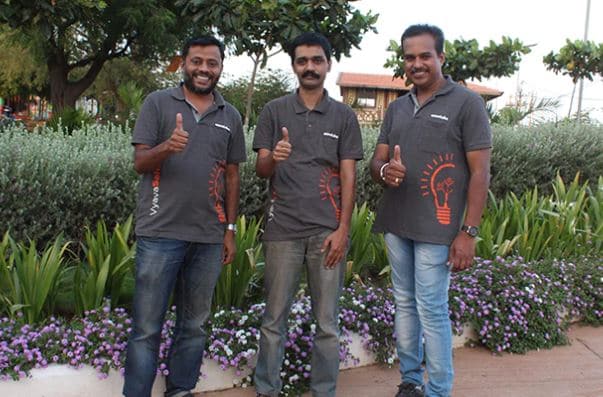As the population grows at an ever faster and faster rate, transforming how the world feeds itself is going to be a necessity. Even though up to a third of the food currently produced goes to waste, incremental improvements to current practices aren’t going to be enough: mankind will need transformative breakthroughs to survive. Those breakthroughs include eradication of pests that can destroy crops.
In India, a country with over a billion mouths to feed, a startup open innovation platform serving the agricultural agtech sector is beginning to make itself noticed. Called VyavaSahaaya (which means ‘support to agriculture’), it helps problem owners find agtech-related solutions through using open innovation prize challenges to address issues at any stage of the field-to-table supply chain.
We caught up with Satish Bhavankar, a 42 year old MBA graduate who is a co-founder of Aasalabs, the company behind the platform.
Hi Satish. What led you and the other co-founders to set up Aasalabs and the VyavaSahaaya platform?
There are three of us and we met in 2015 when we were all working at Qwinix Technologies, a next-generation software development and cloud MSP (Managed Service Provider) that has teams in Denver, Colorado; Costa Rica; and we were at Mysuru in India. Our core skills are general management in the digital and IT sector – which is me, and I’m in the middle – software tech development, and product design.
My work started to involve ideas along the lines of open innovation through a Volunteer Management system. I left Qwinix and investigated the open innovation space more deeply from a base in an accelerator hub. I also approached the NSRCEL startup incubator and their favourable response helped me believe I was on to something.
The three of us then came together again in early 2017 and decided to launch Aasalabs. It was then maybe another four months before we arrived at the idea that became the VyavaSahaaya platform.
What were your own first challenges at VyavaSahaaya?
There were three.
First, it was a classic chicken-and-egg situation to try and sign up problem solvers while we had no challenges to solve, and to sign up problem owners when we didn’t have a network of solution providers in sufficient numbers.
The second was setting a pricing structure that problem owners would recognise as good value that at the same time was going to put us on a sound financial basis. We decided on multiple pricing structures to give problem owners a choice, and I have to say I think we were just lucky to get it right. I can’t pass on any advice on that.
Third, we made sure to design the platform to enhance both direct and indirect networking.
Is there anything that sets you apart from other open innovation platforms?
Yes, not only do we use our network of problem solvers to provide solutions to challenges, we also go further and work with our clients in the design and implementation of those solutions through to product commercialisation. They can come to us with a problem and leave with a product to take to market.
So this is part of your flexible pricing structure?
That’s right, from our range of services each problem owner can choose the services they require. It’s in three parts:
- A challenge hosting fee based on the complexity and a range of other factors
- Consultation on product development and field trials
- Implementation of solutions and product commercialisation
While we’re talking about money, have you received any financial backing?
Not yet. We’ve bootstrapped the business since the start, and we’re based in a startup hub. Some angel investors have shown interest and we have begun working on our first investment round.
Finally, what’s the progress been like?
We’re on target with healthy growth to reach a problem solver base of about 2,000 people. Two new challenges launched this quarter, and more are in the pipeline. We’re currently working with Bayer on a challenge to control the spread of an invasive pest in corn fields, with the Deshpande Foundation and Beanstalk agtech.
Bayer wanted to activate entrepreneurs to review of all types of digital tools and approaches that offer timely and context-specific information that enables small and large farms to track, spot and treat fall amyworm (Spodoptera frugiperda). It’s a pest that arrived in India in 2018 and has spread in epidemic proportions. The outcome was we scouted 14 technology providers that can help the Bayer Crop Science Division and we’re currently validating which technologies to bring to the final trial phase.
Thank you Satish, we wish you good fortune.






0 Comments